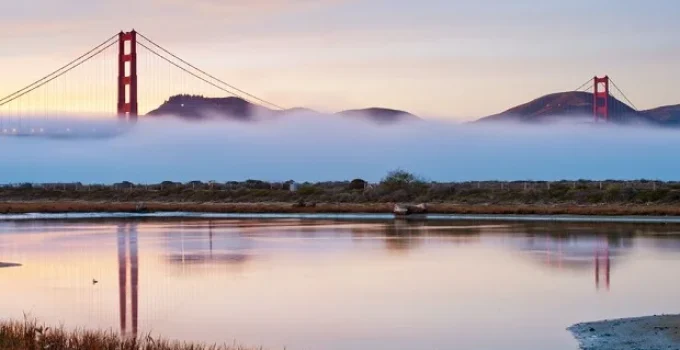What Is Fog?
Answer at a Glance: Fog is a type of cloud that forms at ground level when air near the surface cools and water vapor condenses.
When you walk outside and see misty air around your feet or your car headlights can barely shine through the haze, you’re looking at fog. Fog is not just like a cloud—it is a cloud, but instead of floating high in the sky, fog forms right at ground level. It’s made of the same tiny water droplets that make up clouds in the sky. The only difference is how low it forms.
🌐 Dive Deeper
- How Does Fog Form?
- What Makes Fog Different from Other Clouds?
- Types of Fog
- Where and When Does Fog Happen Most?
- 🎯 Final Thoughts
- 📚 References
🌡️ How Does Fog Form?
Fog forms the same way clouds do—through condensation. Here’s how it works:
- Water from lakes, oceans, rivers, or even damp ground evaporates and becomes water vapor.
- When the air near the ground cools to the dew point (the temperature at which air becomes saturated), the water vapor condenses.
- The tiny water droplets that form hang in the air and reduce visibility, creating fog.
Unlike high clouds, which need air to rise and cool high above the ground, fog forms when warm, moist air near the surface cools down—usually overnight or early in the morning.
☁️ What Makes Fog Different from Other Clouds?
| Feature | Fog | Regular Clouds |
|---|---|---|
| Location | Touches the ground | Floats higher in the sky |
| Visibility effect | Reduces visibility a lot | Often doesn’t block ground view |
| Formation process | Cooling near surface | Rising air cools aloft |
| Movement | Usually still or creeping | Often drifts with wind |
📊 Interesting Stat:
According to the National Weather Service, fog reduces visibility to less than 1 kilometer (0.62 miles). If visibility is better than that, it’s called mist, not fog.
🌫️ Types of Fog
Fog isn’t all the same. Meteorologists recognize several different types of fog, depending on how they form:
| Type of Fog | How It Forms | Common Locations |
|---|---|---|
| Radiation Fog | Ground cools overnight and chills moist air above it | Valleys, open fields |
| Advection Fog | Warm moist air moves over a cooler surface | Coasts, especially California |
| Upslope Fog | Moist air moves uphill and cools | Mountain slopes |
| Evaporation Fog | Cold air passes over warm water | Lakes, ponds in fall |
| Freezing Fog | Fog droplets freeze on contact with cold surfaces | Cold regions during winter |
Each type looks similar but forms under different conditions in the atmosphere.
🌍 Where and When Does Fog Happen Most?
Fog can form almost anywhere, but it’s more common in certain areas and at certain times of year:
- Near oceans or lakes, where water adds moisture to the air
- In valleys, where cool air sinks and gets trapped overnight
- In cooler months, especially autumn and winter, when temperatures drop quickly at night
One famous example is San Francisco, California, which experiences thick advection fog almost daily in the summer. That fog rolls in from the Pacific Ocean when warm inland air draws in cooler, moist air from the sea.
🌁 Fun Fact:
The Golden Gate Bridge is often covered in fog so thick it becomes completely invisible from a distance!
🎯 Final Thoughts
So, what is fog and is it a cloud? The answer is yes—fog is simply a cloud that forms close to the ground. It’s made of tiny water droplets that condense when warm, moist air cools at or near the surface. Just like clouds in the sky, fog forms through condensation, but it hugs the land instead of floating high above it. Whether it creeps through a valley or hides a bridge, fog is a powerful weather phenomenon that reminds us how fascinating Earth’s atmosphere truly is.
📚 References
- National Weather Service. “Fog Types.”
https://www.weather.gov/jetstream/fog - NOAA SciJinks. “What Is Fog?”
https://scijinks.gov/fog/ - NASA Earth Science. “How Do Clouds and Fog Form?”
https://climatekids.nasa.gov/fog/ - Met Office UK. “What Is Fog?”
https://www.metoffice.gov.uk/weather/learn-about/weather/types-of-weather/fog
